This Just In: Rice-Cracker Crusted Tuna
Sometimes you’re eating out and encounter a dish that’s just perfect: one that shows once again why chefs have a talent that the rest of us can only dream about. Jean-George Vongerichten is such a chef and Boston now enjoys his Market restaurant at the W Hotel (Tremont and Stuart Streets). I highly recommend dining there and suggest that, if you’re not more than two, you eat at the bar (first-come, first-served but seats are usually available).
The knock-out dish I’m referring to is the Rice-Cracker Crusted Tuna at $15.
Well. I had to go home and try to reproduce it. This was made easier with a Google search for the recipe which was right there along with a video of J-G demonstrating the process.
If you’d like to give it a try, my experience suggests that you should: a) crush the crackers into smaller pieces than J-G’s; b) be certain that the tuna is as cold as possible when you fry it; take it out of the refrigerator only briefly to coat it and return it if not cooking it immediately; c) reduce the amount of oil in the mayo to make it a bit thicker; and d) cut the log into at least 6 pieces: more is better!
Here’s what mine looked like:
Ah, New Orleans!
Just returned from three days in New Orleans (programming language conference) and thought you might like to see the most photogenic things I ate. I carefully researched the best local spots and wound up at Mother’s for their oyster po’ boy (very impressive):
I particularly enjoyed this sign hanging on the wall:
The second stop was the Bon Ton Cafe for their famous crayfish etouffee:
The final meal was at Emeril’s which offers the most spectacular lunch special for $19.99. For that price, in addition to soup, I sampled the grilled shrimp:
And the chocolate peanut butter pie:
Check it out!
Great French Toast: Santa Fe via James Beard
In Marion Cunningham’s classic The Breakfast Book, she passes on her “favorite” french toast recipe. She learned it from James Beard (she was one of his most famous students: she did the 80s revision of Joy of Cooking) who found it in the dining cars of the Santa Fe railroad, back in the good old days.
Using Iggy’s French Pullman loaf, dip three slices in: 2 eggs, 1/4 cup whole milk, 1/4 tsp nutmeg, and a big pinch of salt (I add a few drops of vanilla extract). Then press the coated bread (both sides) onto a plate of slightly-crumbled corn flakes. Fry in butter until brown and crisp. Serve with confectioner’s sugar and maple syrup. A wonderful treat for a weekday dinner!
Back to Jean-Georges’s Market
After checking out the oriental rug auction at Skinner yesterday, I stopped at Market in the W hotel, eating at the bar. It was my third visit and I’m still a big fan of Jean-Georges. Started off with the butternut squash soup with mushrooms; a bit runnier than I had expected but the flavor was there with an undercurrent of onions:
Then the off-menu, first-of-the-season Nantucket scallops with a cranberry(!) vinaigrette, fairly tart and a nice play against the tiny dabs of wisabi on each scallop:
Finally, the “rice cracker crusted tuna [log] with citrus-chili emulsion;” the cracker crumbs are adhered by egg white(!) and flash fried to crispness:
Highly recommended for those who like adventuresome eating. Amusingly, the menu also contains a column with the heading “Simply Cooked”: all the proteins from the rest of the menu, simply pan-fried without any sauce. Sort of like going to Le Bernardin and ordering filet mignon!
Tips and Tricks Meeting
We had a very nice meeting at my home on Sunday to explore some tips and tricks following the usual fine conversation about where to buy it and the latest restaurants.
We looked at bag-in-box wine which has the marvelous quality that one can drink a half-glass at a time for weeks without oxidizing the wine. I’m currently in thrall to this cote du rhone available at Wine and Cheese Cask ($30 for 3 liters = $7.50 bottle):
I’m also excited about this soda system (a tip from Niki!) which is available at Tag’s in Porter Square. The CO2 cartridge provides 100 liters of carbonation and is exchangable.
We fried some almonds in peanut oil to demonstrate the superiority of freshly made nuts: you can do the same with most others and I’m addicted to freshly fried pepita seeds.
Perhaps the most enthusiastically received tip was the German Pancake: 1/4 cup flour, 1/4 cup whole milk, 1 jumbo egg, and nutmeg baked in a preheated frying pan at 400 degrees for 22 minutes:
Then add lots of lemon juice and your preferred amount of confectioner’s sugar: yum!
Our Open Meetings coming up October 5-6
On Tuesday (5th) and Wednesday (6th) of the coming week, we’ll hold our first (and only) gathering of the year at HILR in hopes of attracting some previously undiscovered hard-core Foodies among the membership. Because of building rules, we can’t do any cooking on-site (can’t even offer to sharpen your knives — whatever they may be in the kitchen, they’re considered weapons at 51 Brattle; on second thought, I guess perhaps they’re weapons in the kitchen from the chicken’s point-of-view) and thus we’ll be content to talk about the pleasures of food. Please come, if you can, ready to extoll your favorite cookbook or recipe. (If you can’t come and wish to be retained on our rolls, just email to that effect.)
What we’re eating in this season
I make it a practice of photographing anything we make that looks good enough to eat (ahem, that means most of what we actually eat). I thought it might provide a bit of inspiration if I posted some examples. (Foodies: please email me your latest creations so I can post them here as well.)
We recently finished the wild Maine blueberry season which meant adieu to our Blueberry Tarte, something that gets made on the first day those fabulous blueberries appear in the market (Wilson Farm and Russo’s, in my experience); and, at least on that inaugural occasion, completely consumed by the two of us within hours. We average two blueberry tartes a week during the season. Recipe on request (the most requested recipe published by Women’s Day in their first 50 years)!
Then, of course, it’s also the tomato season and we’ve had terrific luck at the farmers’ markets at the Charles Hotel and in front of the Science Center. Every other day we have this boring combination of tomatoes, fresh mozzarella (Mozzarella House at Russo’s), and Greek oregano with slivers of basil (not yet added).
With too many tomatoes (an oxymoron), we also make gazpacho from the recipe in David Rosengarten’s fabulous It’s All American Food, a collection of recipes for the classic dishes of various immigrant groups as made in America:
Last in the tomato category is the wonderful bread salad the Tuscans call panzanella, according to the recipe in Guiliano Bugialli’s The Fine Art of Italian Cooking (by which he means Tuscan cooking):
When we get into American-mode, one of our favorite things (after Buffalo Chicken Wings), is corned beef hash the way it used to be made, with sizable dice of corned beef, potato, and lots of onions with a fried egg on top:
Finally, dessert: the problem is to find good peaches and we’ve found it enormously hard. But when we do (Kimball’s Fruit Farm), we go for peach shortcake:
Then, here are a couple of Tips and Tricks which will whet the appetite for our meeting on October 17th where they’ll be demonstrated. We have a house rule that if we want to eat a potato chip, we need to have made it ourselves. And when the craving becomes too much to bear, that’s what we do. But when we need a lighter starch to go with the grilled sirloin, we do a variation the French call gaufrettes — you too can do it with your handy mandolin:
Finally, a garnish trick that I wish I’d known about years ago: fry a slice of prosciutto in bacon fat until well done; drain and blot on paper towels; and you’ve got a stunning garnish (I don’t mean pretty, I mean tasty), here crunched over our red pepper soup:
Cappuccino trick: who knew?
I’ve been steaming milk for my several-a-day cappuccini for many, many years. But I only recently realized something that every barista must know: in order to get that stiff foam which lasts during the period one drinks a cappunccino, you have to let the milk sit for two or three minutes after steaming it before you pour it into the cup. You’ll find that this make a terrific difference.
Really Good Japanese: Basho
Attended the Culinary Guild of New England Supper Club tonight at Basho, a very large and serious Japanese restaurant on Boylston Street in the Fenway Park area. A remarkable meal which should be brought to the attention of other Japanese food lovers.
First course was home-made organic (?? — what would you call the other kind?) tofu with edamame and spicy tuna on a rice cracker. All terrific with the tuna a standout.
Second course was three skewered items from their grill: shitake mushrooms, pork belly around asparagus, and very nicely garnished pork slices. Each a delightful few mouthfuls.
Finally, an assortment of nigiri and maki such as I’ve never experienced. The nigiri were mackerel, salmon and yellowtail, each with a terrific garnish of, for example, cilantro aioli, jalapeno, etc. The maki were spectacular: tempura shrimp and crab, tuna around avocado, and soft shell crab inside “white tuna” (which is really a very white and oily variety of mackerel from Hawaii).
The tempura maki:
The tuna avocado maki:
Hamachi nigiri:
Saba nigiri:
And the incomparable soft-shell crab maki with white tuna:
Rush on over!
Menton: Boston’s Latest Try
As a relatively new member of the La Confrerie de la Chaîne des Rôtisseurs, an international culinary group, I attended their fall black-tie event last night at Menton, Barbara Lynch’s (and her financial backers’) bet that Boston is ready for really high-end dining. The four-course prix fixe menu goes for $95 while the chef’s seven-course tasting menu is $145; if you’d like wine with the latter, add $105 for a nice round $250 per person.
Happily, I was seated at the chef’s table in a hermetically-sealed room adjoining the kitchen where I could see all 17 of the kitchen staff doing their thing or, mostly, milling around waiting for the service of the next course. We had taken over the entire restaurant so the service was discontinuous and, given the four-hour length of the meal, there was a lot of downtime.
The meal began with a bang with this fine Butter Soup with meaty chunks of lobster and a littleneck clam. The nine black dots were called “caviar” on the menu. Don’t overlook the flower in the middle: I hope it was edible but at that size there’d be no harm done in any case!
The second course was “Shetland Salmon Chaud-Froid” with white sturgeon caviar and root vegetables: about as much salmon as one would get in two small slices of sashimi, just barely cooked and coated with horseradish flavored crème fraîche. Unfortunately, the minuscule amount of horseradish could not be tasted (a serious error) but I thought the idea was wonderful and I’ll be trying to duplicate the intention at home very soon. (We had a good discussion of whether the salmon had been cold-steamed, starting with cold boullion, or simply plopped into a microwave for sixty seconds. Could have gone either way.)
Then on to the East Coast Halibut in a corn velouté with chanterelles and scallion. The fish was properly seared and the corn velouté was tasty (if a bit weak) but the filled pasta (not described on the menu) was tasteless even if pretty.
Onward to the pheasant pot au feu with a quenelle-shaped forcemeat blob said to contain both foie gras and truffles. As you can infer, I tasted neither in that dry, unappetizing excuse for using up the legs of the pheasant. The pheasant breast was delightful and the vegetables, all different, were quite competent.
Finally, the meat course: Short Rib of Beef, beef tongue, mille-feuilles potatoes and “bone marrow” (could that have been the green stuff?) with a thin slice of mushroom masquerading as a truffle. All perfectly fine if a tad unimaginative. I do have to give them credit for serving tongue (one of my favorite things) and, I suppose, credit for cleverly using only the designation “langue de boeuf” on the menu.
The dessert; ah, the dessert, described as “Apple Tarte Tatin.” One of my sharpest pet peeves is the restaurant practice of using the name of a well-known dish to describe a home-grown variation which is wide, wide of the mark. As you can easily see, the thing that was served bore no more relationship to Tarte Tatin than that they both contained apples and that an unsuccessful attempt had been made to caramelize these. The vanilla glace was good and the apple chip is a wonderful trick that we’ll demonstrate at our October 6th meeting.
Loose ends: The wines were very fine, properly paired with the food, and served in generous portions. The cheese course did not exist and I consider this a major flaw (perhaps due to Chaine and not Menton).
The bottom line: really good high-end French food of the sort one finds, for example, at Georges Blanc in France, is simply not available in the US in my (admittedly) limited experience. (See my earlier review of La Grenouille, New York City’s last fine French restaurant.) This is not, in my opinion, a great shame in the big picture. It’s the sort of thing that requires a very large investment, in time, in money, and in experience eating French food. While the pleasures to be had at a successful meal of this kind repay the investment, there are many other less demanding ways of getting the equivalent pleasure. I wish those alternatives also received the attention and acclaim accorded to fine dining in the French style.
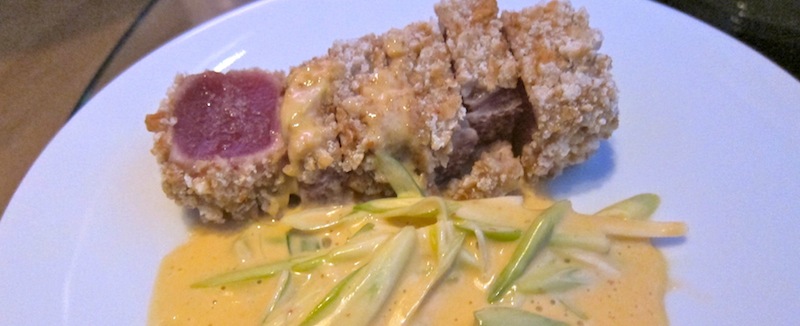

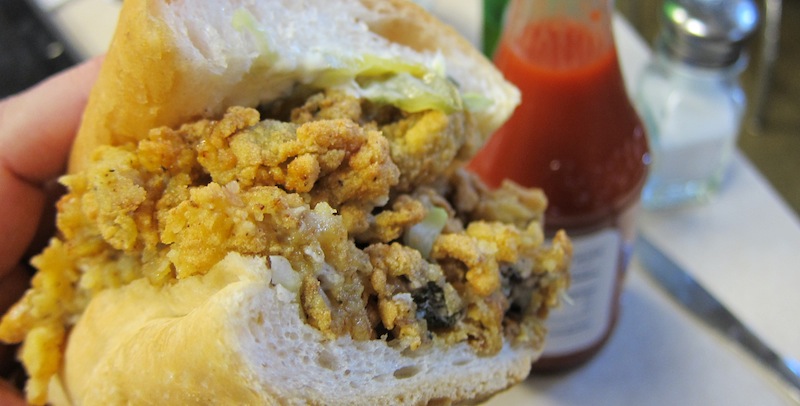
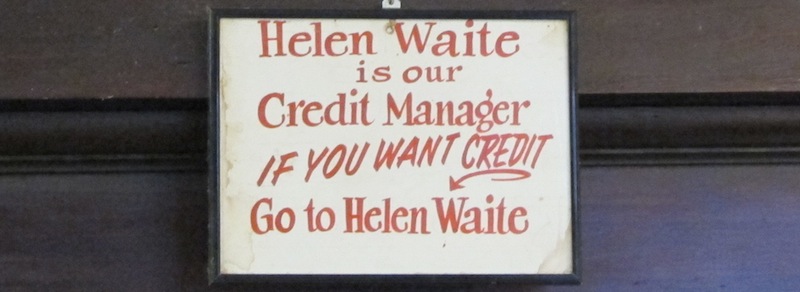
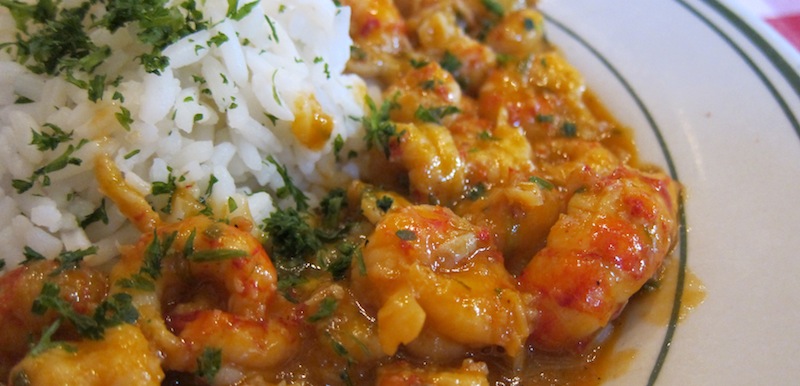
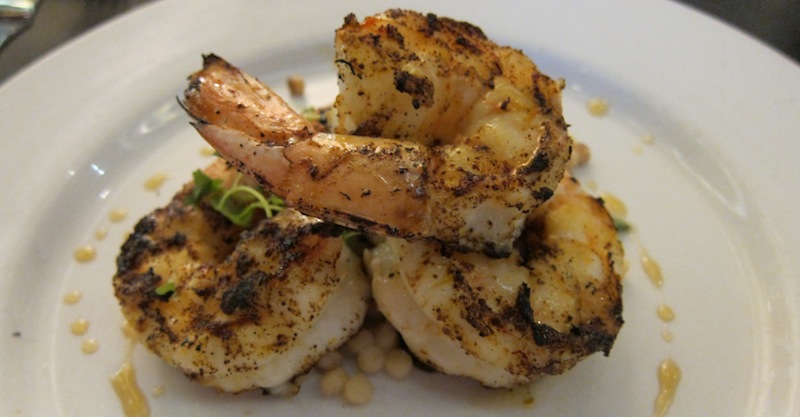
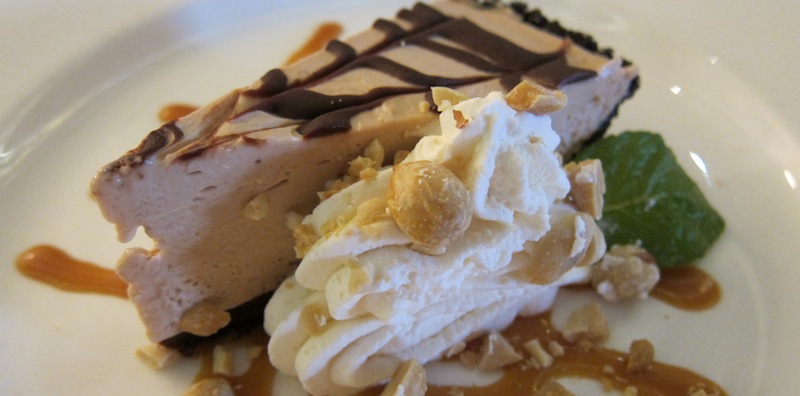
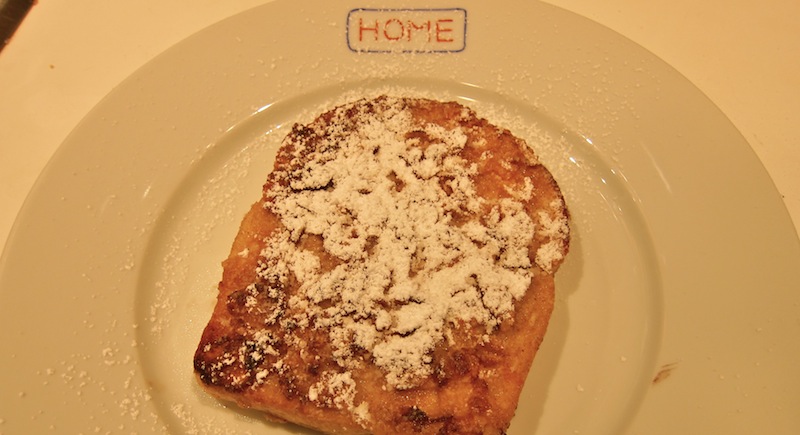
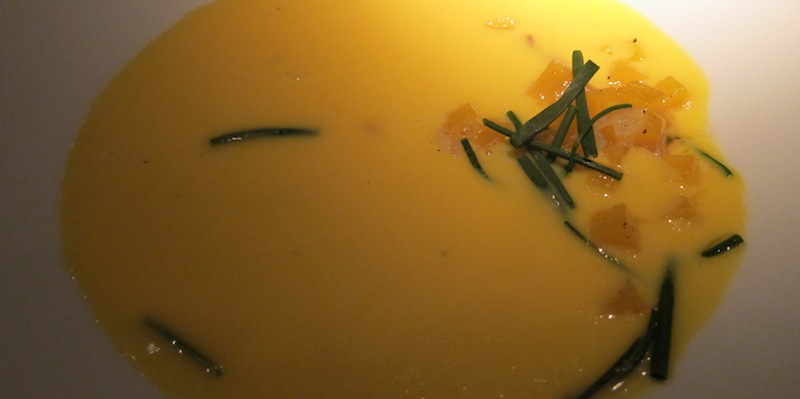

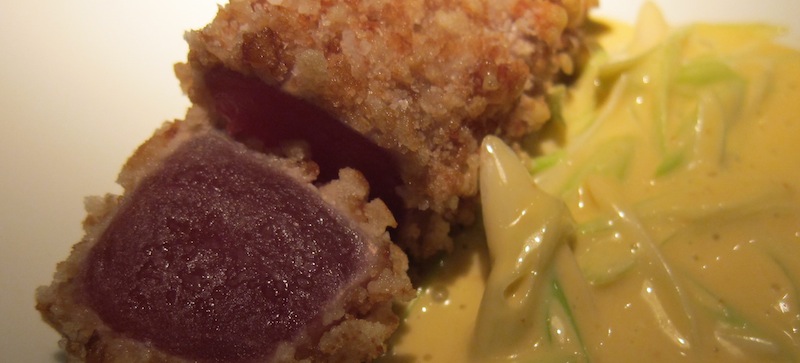
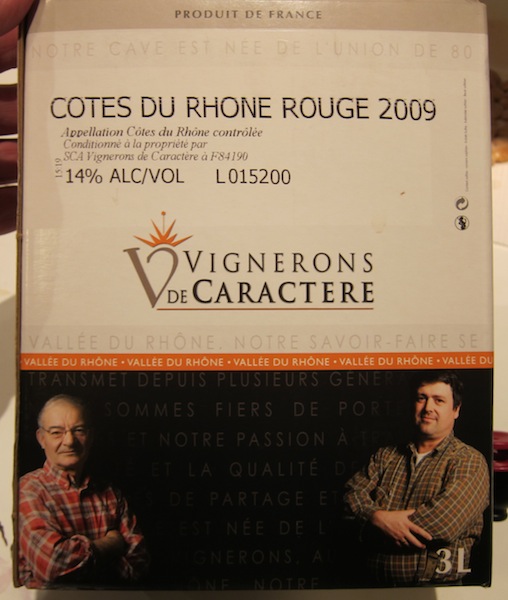

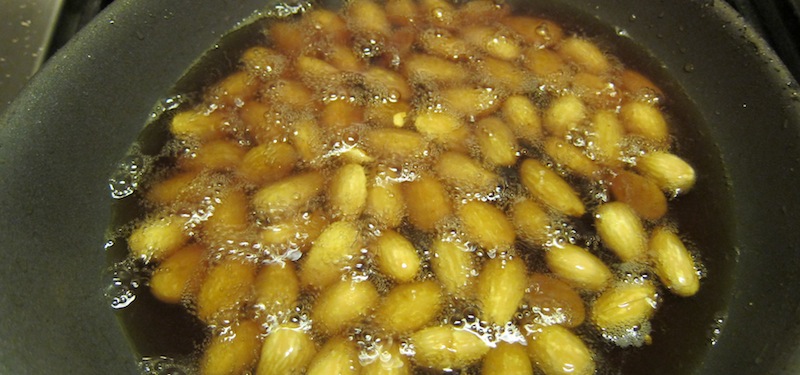

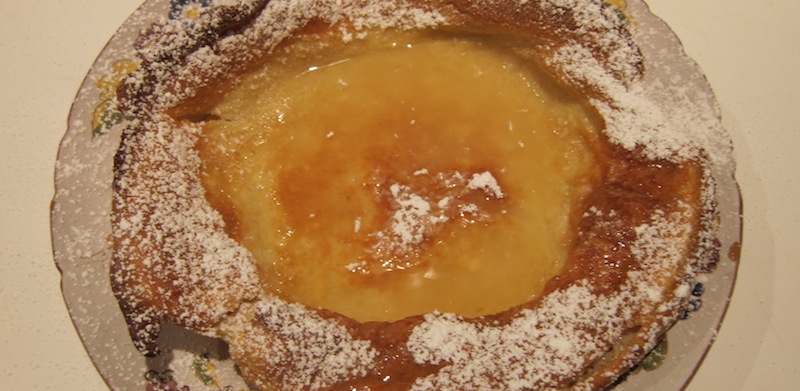
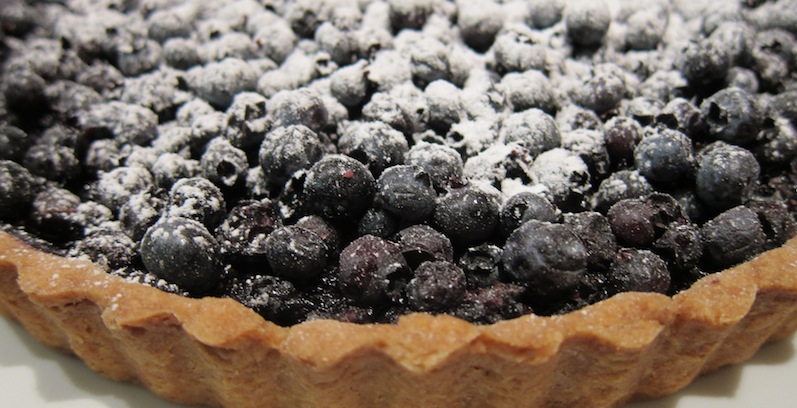
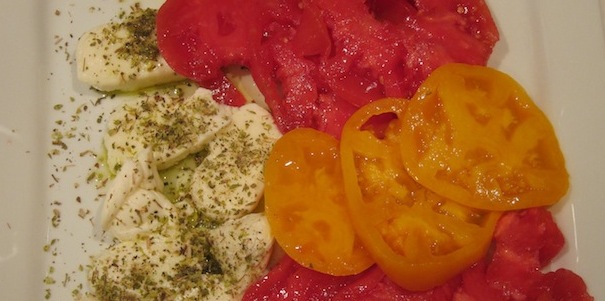
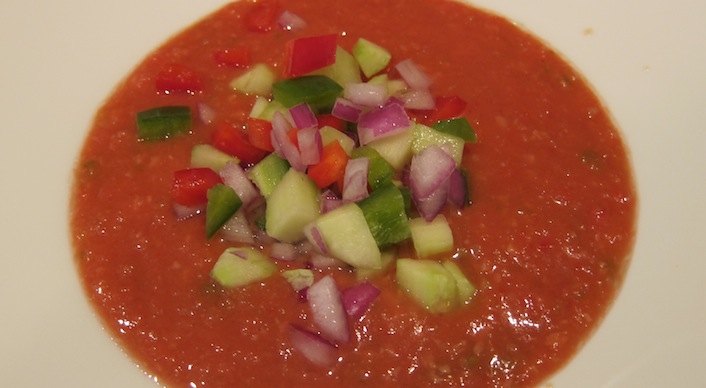
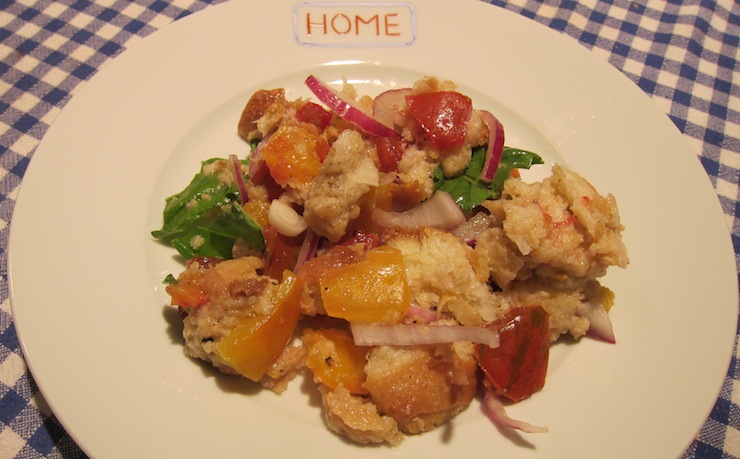
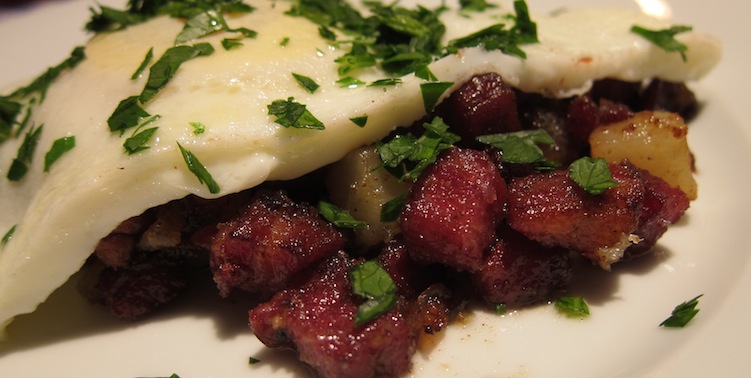
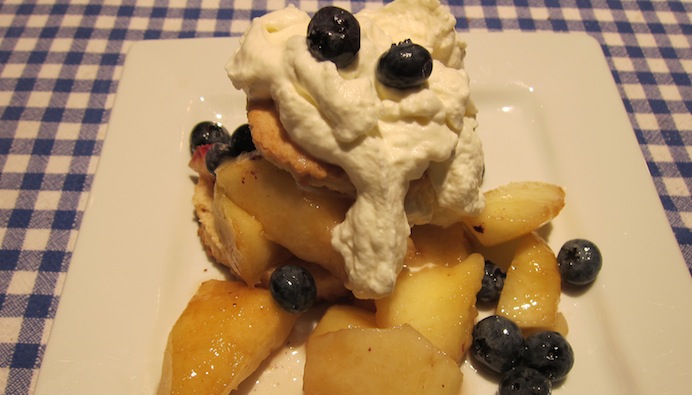
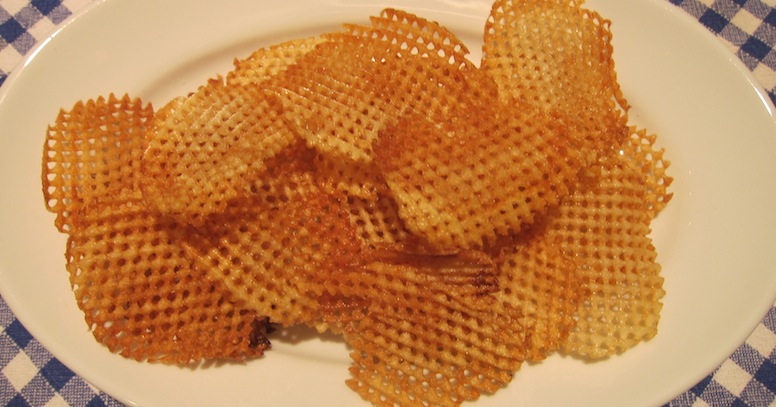
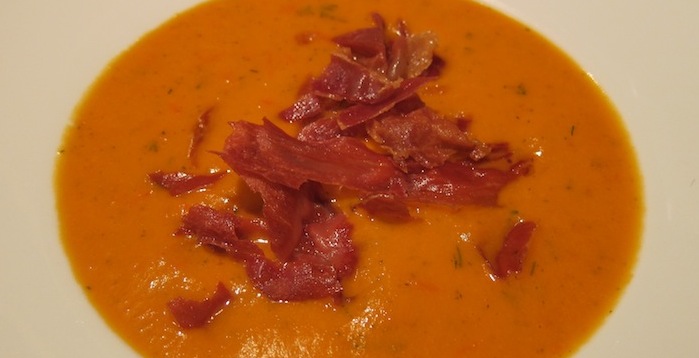

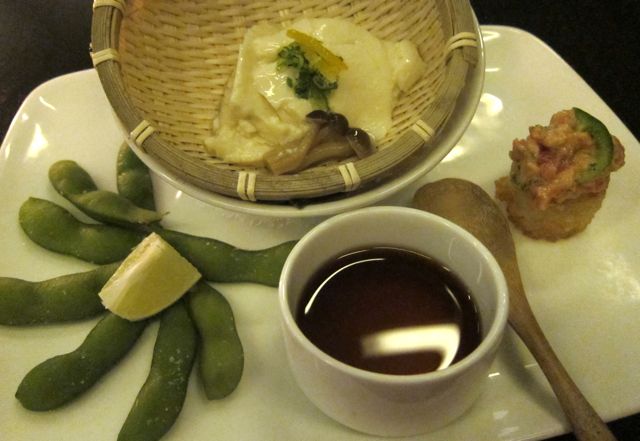
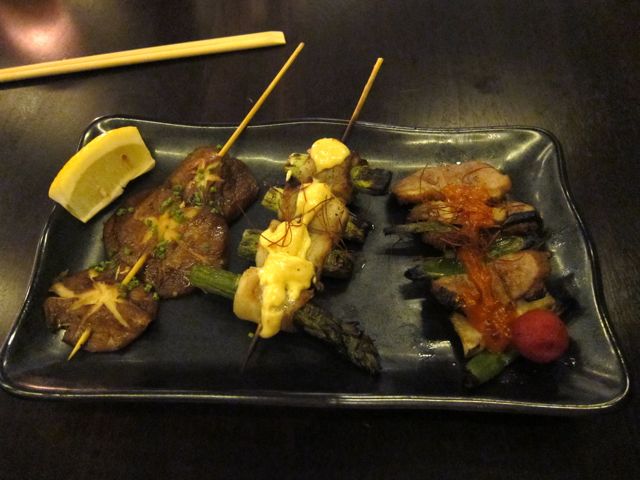


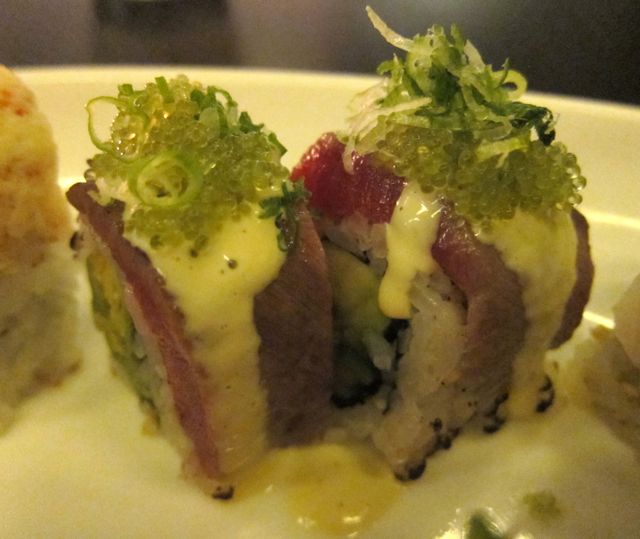

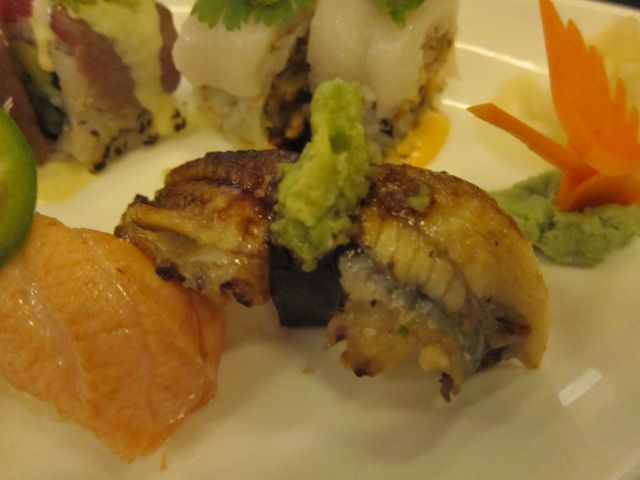
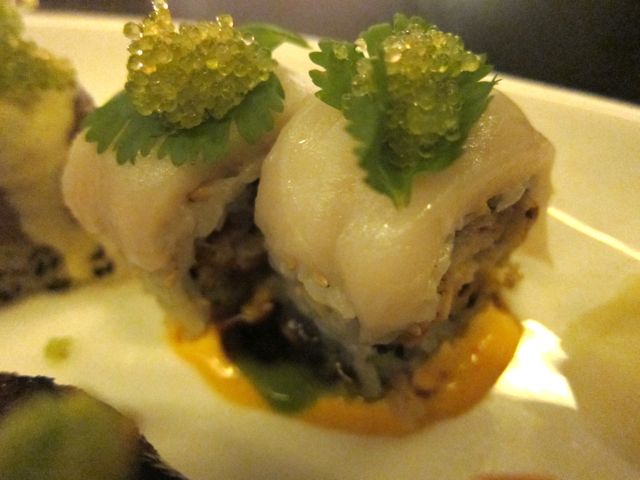
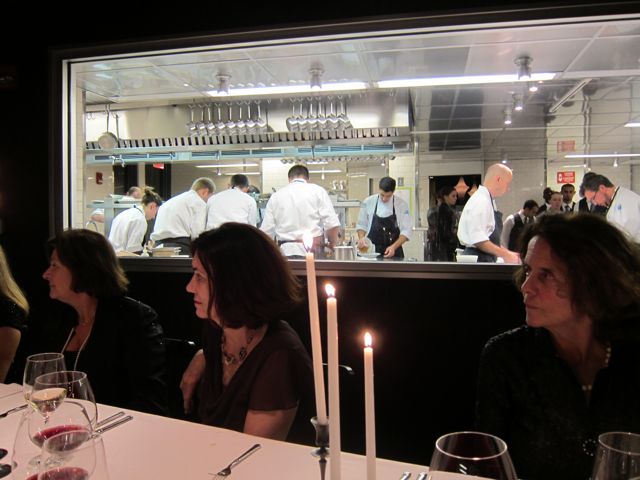
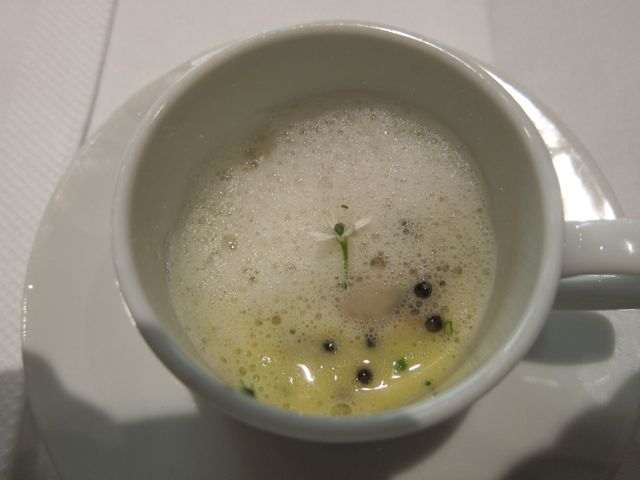

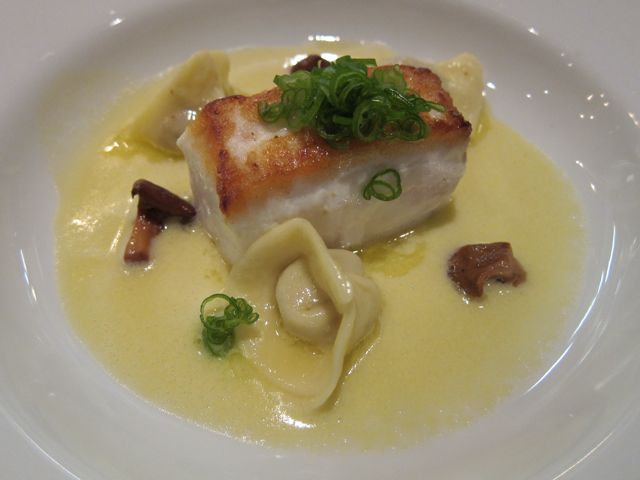
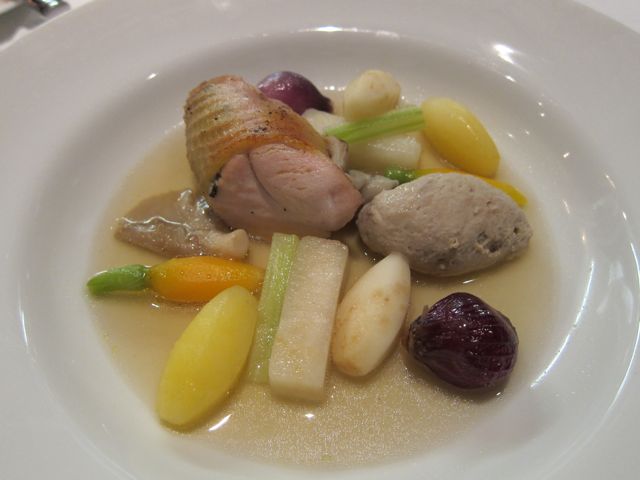

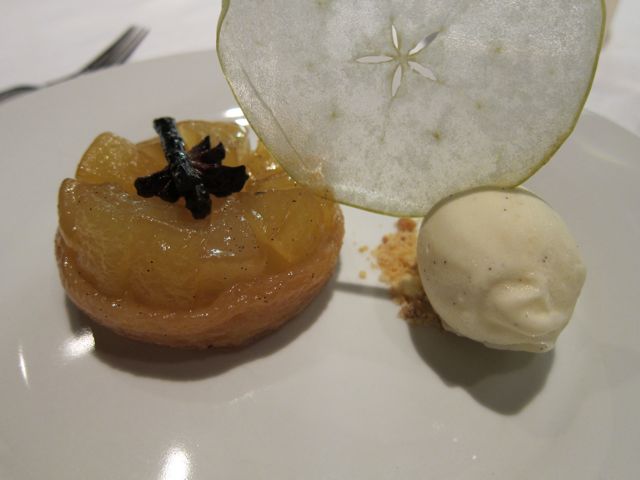
Recent Comments